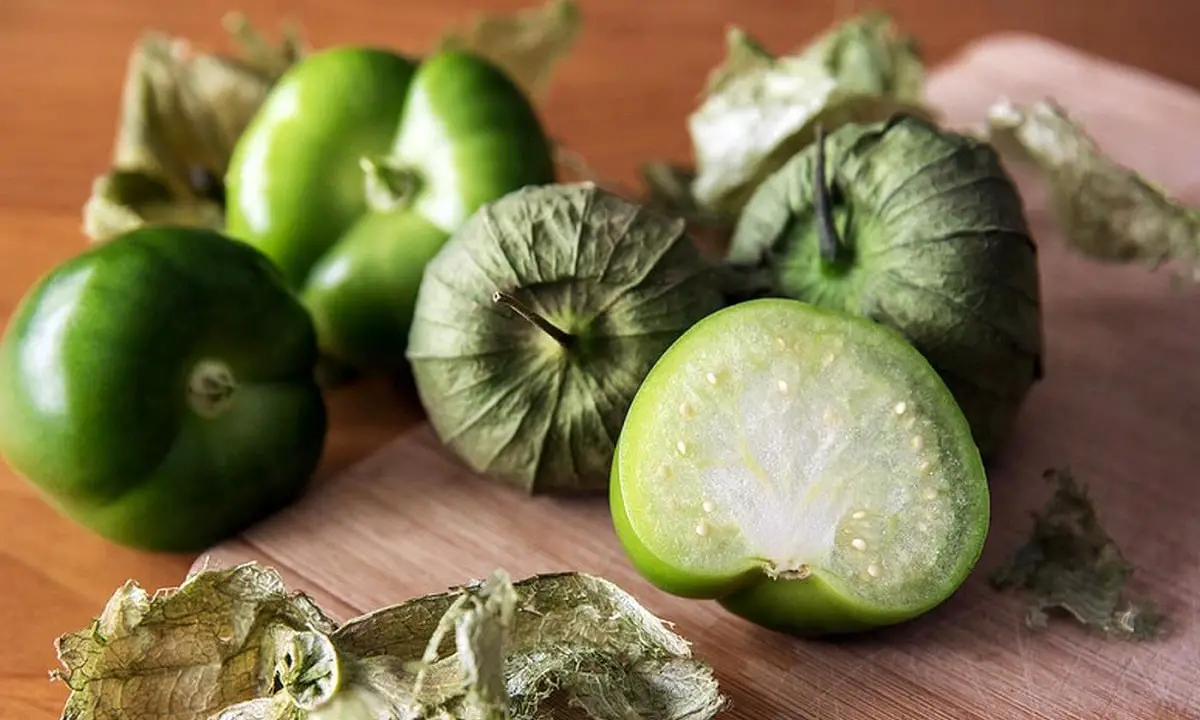

Plant Physalis philadelphicabelongs to the Solanaceae family, is also called ‘green tomato, corn, wild tomatillo or peel ‘; species with a wide genetic variety.
This is distributed throughout the Mexican territory at an altitude between 8 to 3.350 meters above sea level;.recognizing eight categories: Arandas, Manzano, Milperos, Puebla, Rendidora, Salamanca, Silvestre and Tamazula. They have not been studied agronomically and genetically.
Features


In the Antilles, Central America, South America and the United States it was accidentally introduced. This 1 m tall plantbranched, with solitary flowers, smooth and round stem with leaves 1.5 – 4.5 cm wide by 3.7 – 7.9 cm long, whose fruit is a 1.5 cm diameter berry, it is known and cultivated by the Aztecs since pre-Columbian times.
Flowers annually and is common in fieldsirrigated crops, along roadsides, wet soils and ditches. Its fruit is edible with a somewhat acidic flavor; it is used medicinally or as fodder. It grows in soils with acidic, alkaline or neutral pH; with clayey and humid texture, although it is susceptible to puddles of water, for this reason the drainage of the area where it is planted is very important.
Uses of Physalis philadelphica
This is older than the tomato, its use in Mesoamerica was common in the preparation of saucesWhen accompanied by the chili the spicy character of this was reduced. With the raw or cooked tomato, mince and puree are made as the base; Such is the case of the green sauce that is used in stews or as a companion to meals.
The dehydration of the fruit for its conservation is very common, and lasts more than three months. The procedure is simple, you only expose yourself to the sun for a certain time. According to experts, the price of dried tomato is higher.
Its name derives from the Nahuatl ‘tomatl’, a word generally used for plants with berries, watery pulp and many seeds. The wild form is also called ‘cornfield tomato or miltomatl’, smaller than the usual one.
The tomato is attributed an infinity of medicinal properties. The fruit and the leaves are beneficial for stomachaches, headaches and discomfort caused by hemorrhoids. The juice is used for a throat infection; mumps is cured by smearing the fruit with salt and placing it as a compress.


Cooked calyces are recommended for diabetes; these also tenderize meatsare flavoring and counteract hair loss. To combat wrinkles and dry skin. The cold in newborns and the cloud in the eyes are relieved using tomato juice. The root calms colic, diarrhea and gastro-hepatic crisis; it is also a diuretic.
Tomatoes suffer from various diseases and are attacked by pests like parasitesworms that hatch in the flower, and insects (aphids) that are usually exterminated with insecticides and chemicals. Frost and rain damage the fruit, causing total or partial loss of the harvest.
One of the most outstanding characteristics of the genre Physalis It is its globular calyx, which during the ripening process covers the fruit. Among the vegetables of great value and economic importance in Mexico, the husk tomato occupies the fifth place according to the cultivation area. It is in this country where there is a marked diversity, and this is due to the richness of the species located in its territory.
Taxonomic controversies have arisen to apply production techniques and use its wild species, which have an indisputable nutritional value, and in turn condense substances with unmatched medicinal cost, such as withanolides with great anticancer power; flavonoids that we know are natural antioxidantsvitamins and folic acid that are concentrated in this fruit and make Physalis philadelphica an attractive variety for researchers in the country of origin.
In the Mexican diet, the tomato has been around since ancient times. This is demonstrated in the archaeological studies made during the excavations in the Tehuacán Valley where traces were found that the population fed on plants, including the Physalis philadelphica.
